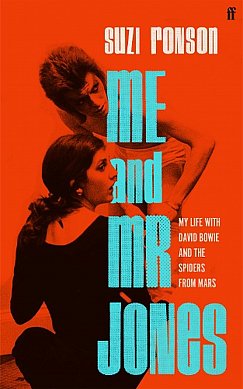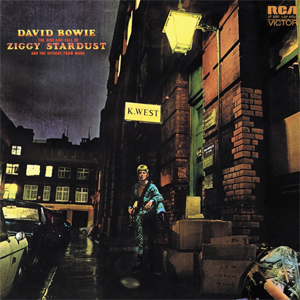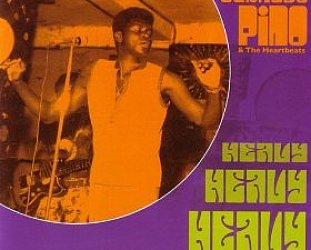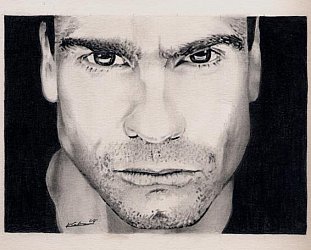Graham Reid | | 3 min read
Slaughter on Tenth Avenue, by Mick Ronson

In the early Seventies, Suzi Fussey was living a conventional life at 96 Cumberland Road in suburban London with her mum, dad and brother.
She'd quit school at 15, took a course at Evelyn Paget College of Hair and Beauty in Bromley, got a job in Beckenham, sees bands like the young Pink Floyd and Georgie Fame and the Blue Flames, likes to get a bit creative with hairstyles because that was the mood of the times and . . .
Life is good with a few casual boyfriends and nights at clubs with the other girls, then Mrs Jones comes into the shop as a client.
She brags about her artistic son and mentions he was in the top 10 with his song Space Oddity.
Suzi knew the song – it was a hit a year ago – and Mrs Jones likes her manner and her hair styling, so promises to come back.
Before she does, Suzi sees Mrs Jones' artistic son David Bowie pushing a param down Beckenham High Street. He's wearing a dress and a floppy hat. Builders are whistling at him.
When Mrs Jones comes back she has her daughter-in-law Angie with her who wants “something outrageous”.
And so through chance, Suzi meets Angie and then David, and starts going to their home at Haddon Hall where she does hair for the circus of characters who parade through.
In time Suzi creates Bowie's Ziggy Stardust look for David, starts designing and caring for stage costumes, meets the band and Bowie's unscrupulous manager Tony Defries, is seduced by David (as is everyone, literally and metaphorically) and suddenly her suburban life looks drab and dreary, and the casual boyfriend in Chicken Shack like a throwback to mundane style of music.
She aches to become part of the glamorous inner sanctum around Bowie and after some false alarms she does, and she's there for the rise and rise of Ziggy Stardust and the Spiders From Mars, side of the stage, falling in love with guitarist Mick Ronson, in fancy clubs, racing to do hair and make-up, darning and washing damaged stage outfits . . .
That's her “do” on Bowie on the cover of the Ziggy album.
Then it is America and she is invited along.
 Suzi Ronson tells her remarkable story without guile or rose-tinted glasses: she's far too conservative to enjoy the open marriage that David and Angie have, sees how ruthlessly self-centred and demanding David is (and witnesses his bisexual appetites for very young fans) and finds much of what she observes in the hedonistic world of glam rock fascinating but a bit repellent (or at least she's reluctant to participate).
Suzi Ronson tells her remarkable story without guile or rose-tinted glasses: she's far too conservative to enjoy the open marriage that David and Angie have, sees how ruthlessly self-centred and demanding David is (and witnesses his bisexual appetites for very young fans) and finds much of what she observes in the hedonistic world of glam rock fascinating but a bit repellent (or at least she's reluctant to participate).
She quickly twigs that this is a boy's club with girls just appendages which can be lopped off at will and whim.
It is an exceptionally candid story and if the first third is about hair and fashion that is because of who she was and what she was interested in at the time. But as she grows in confidence and finds her place – sometimes yearning for a more normal existence, although encounters with it send her racing back into the exciting whirlwind – she writes what she sees.
A lot of people come out badly, not the least David whom she adores and admires.
She is there when Bowie breaks up the band live on stage at the Hammersmith Odeon in '73 which leaves the musicians bewildered and adrift. Bowie doesn't tell them much, Defries comes in with a contract for Mick Ronson alone and . . .
Thereafter Suzi sees David from a distance, worries about just how thin that duke has become, is now Mick's partner and can see -- lovely man that he is – he's just a gifted musician from Hull who drinks too much and has no career trajectory.
His debut album Slaughter on 10th Avenue does well enough but things fall apart rapidly; he joins Mott the Hoople and that doesn't work out; he is emotionally and creatively rudderless and then by chance Bob Dylan enters the picture.
Suzi writes evocatively about their first encounters with tequila-slugging Dylan and his circle of acolytes, and the Rolling Thunder Review tour which Mick is invited on to.
But she is still the girl from suburban London who is honest enough to admit has no idea who Allen Ginsberg and all those other famous names are. She just takes people as she finds them.
In that regard this is a refreshing book about an outsider looking at rock culture and often being unimpressed.
The girls who do hair and makeup are their own little cabal, one step removed from girlfriends, groupies and scenesters.
A lot of famous names walk through these pages – Iggy, Lou, Mick Rock, Warhol's crew, Glen Matlock – but this is very much Suzi's story told with understated clarity, often unadorned and at her core, as a basically decent person, she is often unmoved.
She and Mick have a baby, they move back to Woodstock where they have been happy before and then the story goes cold in about 1977.
Decades later her daughter rings from London. Suzi had lost Mick 23 years before before to liver cancer and now she's told David has died from the same disease.
She thinks back to the chance encounters which took her into that circle of bright light all those decades before.
“My life was black and white until I met David and afterwards it was glorious technicolour, as bright as the hair on his head.”
.
ME AND MR JONES by SUZI RONSON Faber $40





post a comment